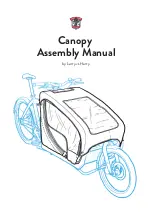
6
Standard Photoelectric Sensors
Safety precautions
This product is not designed or rated for directly or
indirectly ensuring safety of persons. Do not use it for
such a purpose.
Do not use the product with voltage in excess of the
rated voltage. Excess voltage may result in malfunc-
tion or fire.
When cleaning the product, do not apply a high-pres-
sure spray of water to one part of the product. Other-
wise, parts may become damaged and the degree of
protection may be degraded.
High-temperature environments may result in burn
injury.
The following precautions must be observed to ensure safe
operation of the Sensor.
Operating Environment
Do not use the Sensor in an environment where explosive or
flammable gas is present.
Load
Do not use a load that exceeds the rated load. Do not connect the
black wire to the brown wire without a load. Direct connection of
these wires may damage the photoelectric sensor
When you use the photoelectric sensor at temperatures exceeding
45°C, the load current must be within the described values as shown
in the figure below.
Environements with Cleaners and Disinfectants
(e.g., Food Processing Lines)
Do not use the Sensor in environments subject to cleaners and
disifectants. They may reduce the degree of protection.
Modifications
Do not attempt to disassemble, repair, or modify the Sensor.
Outdoor Use
Do not use the Sensor in locations subject to direct sunlight.
Cleaning
Do not use thinner, alcohol, or other organic solvents. Otherwise,
the optical properties and degree of protection may be degraded.
Surface Temperature
Burn injury may occur. The Sensor surface temperature rises de-
pending on application conditions, such as the surrounding tem-
perature and the power supply voltage. Use caution when
operating or washing the Sensor.
Do not use the Sensor in any atmosphere or environment that
exceeds the ratings.
Do not install the Sensor in the following locations.
(1) Locations subject to direct sunlight
(2) Locations subject to condensation due to high humidity
(3) Locations subject to corrosive gas
(4) Locations where the Sensor may receive direct vibration or
shock
Connecting and Mounting
(1) Laying Sensor wiring in the same conduit or duct as high-volt-
age wires or power lines may result in malfunction or damage
due to induction. As a general rule, wire the Sensor in a sepa-
rate conduit or use shielded cable.
(2) Do not pull on the cable with excessive force.
(3) Do not subject the photoelectric sensor to excessive shock
when mounting, in keeping with IP66 standards.
(4)Mount the Sensor using a bracket (sold separately).
Do not exceed a torque of 2.0 Nm when tightening mounting
nuts.
Cleaning
Never use thinner or other solvents. Otherwise, the Sensor sur-
face may be dissolved.
Water Resistance
Do not use the Sensor in water, rainfall, or outdoors.
!
Warning
!
Caution
Precautions for Safe Use
Black
Brown
Blue
Load
Sensor
24 to 240 VAC
Operating temperature (˚C)
200
130
55
45
0
Load current (mA)
Precautions for Correct Use
Summary of Contents for E3F2-240VAC
Page 7: ...7 E3F2 240VAC...


























